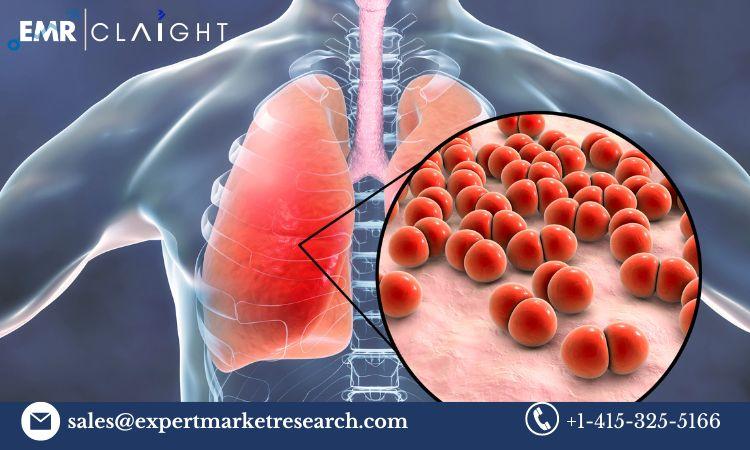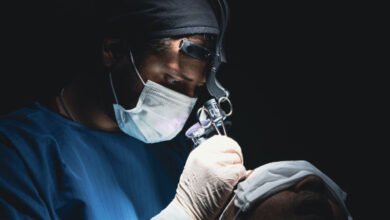Pathogen Reduction Systems Market: Trends, Key Players, and Future Outlook 2032

Pathogen reduction systems are pivotal in minimizing the risk of bloodborne infections during transfusions, which has become a top priority for healthcare systems globally. With the rise of diseases such as HIV and hepatitis, coupled with advancements in medical technology, the pathogen reduction systems market is positioned for significant growth. The market is expected to expand at a CAGR of 19.8% from 2024 to 2032, a rate driven by the continuous demand for safe blood transfusions and innovations within the field.
1. Market Overview
In this section, establish the critical role of pathogen reduction systems in enhancing transfusion safety by reducing the risk of infection. Highlight how, with the growing focus on patient safety, hospitals and healthcare providers are increasingly adopting these systems. Discuss the market’s current valuation, anticipated growth rate, and projections for 2032, providing insights into how the market has evolved and what factors are influencing its current trajectory.
2. Key Market Drivers
This section dives deeper into what’s fueling market growth.
Rising Bloodborne Diseases
Bloodborne diseases such as HIV, hepatitis B, and hepatitis C continue to be significant global health challenges. With approximately 325 million people living with hepatitis B or C worldwide, the importance of safe blood transfusion practices cannot be understated. Discuss how pathogen reduction systems help inactivate pathogens in blood components, significantly reducing the risk of transmitting these diseases through transfusions.
Technological Advancements in Pathogen Reduction
Recent innovations in pathogen reduction technologies, such as UV irradiation, chemical treatments, and photochemical processes, have greatly improved the ability of these systems to inactivate a broad range of pathogens. For example, Cerus Corporation’s INTERCEPT Blood System uses a photochemical treatment to inactivate viruses, bacteria, and parasites in donated blood components. Explain how such technological advancements are not only enhancing safety but also attracting investment and driving market expansion.
Growing Focus on Patient Safety
Healthcare providers and regulatory agencies are increasingly prioritizing patient safety, pushing for stricter compliance with safety protocols. Agencies like the U.S. FDA and European Medicines Agency (EMA) are urging hospitals and blood banks to adopt pathogen reduction technologies to meet regulatory safety standards. This emphasis on compliance ensures that blood products are as safe as possible, fueling demand for pathogen reduction systems.
3. Latest Trends in Pathogen Reduction Systems
Explore key trends shaping the market to provide readers with a forward-looking perspective.
Automation and AI in Pathogen Reduction
Automation and AI are transforming healthcare, and pathogen reduction systems are no exception. AI algorithms can enhance the precision of pathogen detection, while automation allows for faster, more efficient processing. Discuss the potential of AI in pathogen reduction, such as real-time monitoring systems that ensure continuous pathogen inactivation.
Mobile and Compact Pathogen Reduction Units
There’s a growing demand for mobile pathogen reduction units, especially in remote and field healthcare settings. For instance, during disaster relief operations or in rural areas where large facilities are unavailable, compact pathogen reduction systems offer significant benefits. Highlight this trend, as these systems make it feasible to ensure safe transfusions in a wider variety of environments.
Eco-Friendly Technologies
Sustainability is becoming an essential aspect of healthcare innovation. Companies are exploring eco-friendly technologies that reduce energy consumption and lower waste. Discuss how these innovations not only align with global sustainability goals but also make pathogen reduction systems more appealing to environmentally conscious healthcare providers.
Strategic Partnerships and Mergers
Mergers, acquisitions, and partnerships among major players in the pathogen reduction systems market are reshaping the competitive landscape. Cerus Corporation, for instance, has established partnerships with blood centers worldwide to increase the adoption of its pathogen reduction technology. Explain how these strategic alliances enhance companies’ R&D capabilities, expand their product portfolios, and open new market opportunities.
4. Challenges and Restraints
No market is without its challenges. This section provides a balanced view of the obstacles facing the pathogen reduction systems market.
High Cost of Pathogen Reduction Systems
Pathogen reduction systems involve significant upfront costs, making them less accessible for healthcare facilities with limited budgets, especially in low-income countries. Discuss how these costs impact adoption rates and what steps companies are taking to reduce costs, such as developing modular or scalable systems.
Regulatory Hurdles
Obtaining regulatory approval for new technologies is a time-intensive and complex process. Explain how the stringent standards set by regulatory bodies, though essential for ensuring safety, can slow down market entry for new products, thereby limiting innovation.
Limited Awareness in Emerging Markets
In emerging markets, there is often limited awareness and understanding of pathogen reduction systems. In this section, explore the education and outreach initiatives that companies are undertaking to promote these systems in regions where they’re needed but underutilized.
5. Major Players in the Market
Provide detailed profiles of leading companies in the pathogen reduction systems market, emphasizing their market strategies and notable products.
- Terumo BCT, Inc.: Known for innovative solutions in blood management, Terumo BCT’s pathogen reduction technologies enhance transfusion safety. Highlight their key products and discuss how their focus on R&D positions them as a market leader.
- Macopharma SA: The Theraflex MB pathogen reduction system is one of the company’s flagship products. Discuss how Macopharma’s specialization in blood safety products supports their growth in this market.
- Cerus Corporation: With the INTERCEPT Blood System as a key offering, Cerus Corporation has a robust presence in pathogen reduction. Explain how their proprietary technologies work and their competitive advantage.
- AngioDynamics, Inc.: Known for its innovations in medical technology, AngioDynamics offers pathogen reduction solutions that address the safety needs of modern healthcare providers. Highlight any recent developments or product launches that have boosted their market standing.
- Octapharma AG and Pathogen Reduction Solutions Ltd.: Provide a brief overview of other significant players, focusing on their unique contributions to the market.
6. Future Market Outlook
This section gives readers a glimpse into the future of pathogen reduction systems.
- Emerging Technologies and Innovations: Discuss upcoming technologies like Internet of Things (IoT) integration, which allows for real-time monitoring of pathogen reduction systems. This integration can enable remote management, further expanding the utility of these systems in field and rural healthcare settings.
- Expansion into Emerging Markets: As healthcare infrastructures grow in emerging economies, so will the demand for pathogen reduction systems. Explain how increased government healthcare funding in countries like India and China is creating new market opportunities.
- Growth Projections: Reiterate the projected growth rate and discuss the factors expected to contribute most to this growth. Provide forecasts on market value by 2032 and potential shifts in market leadership as companies adapt to new technologies and strategies.
7. FAQs
Answer some common questions that readers might have about pathogen reduction systems:
- What are pathogen reduction systems?: Provide a concise definition and explain their role in healthcare.
- How do pathogen reduction systems work?: Briefly describe the main technologies, such as UV light and chemical treatments.
- Why are pathogen reduction systems important?: Emphasize their role in enhancing blood transfusion safety and preventing the spread of infections.
- Who are the main players in the pathogen reduction systems market?: List key companies and highlight their contributions.





